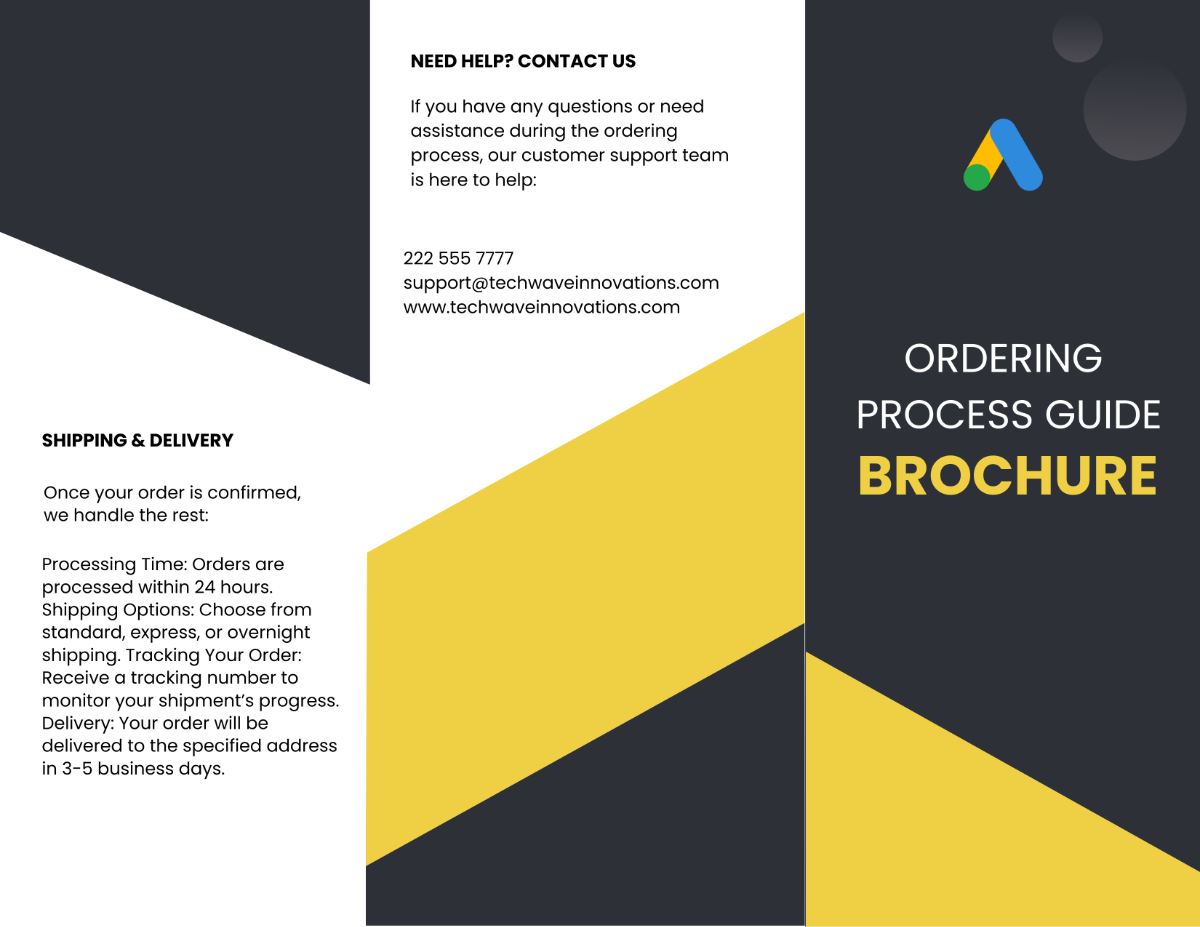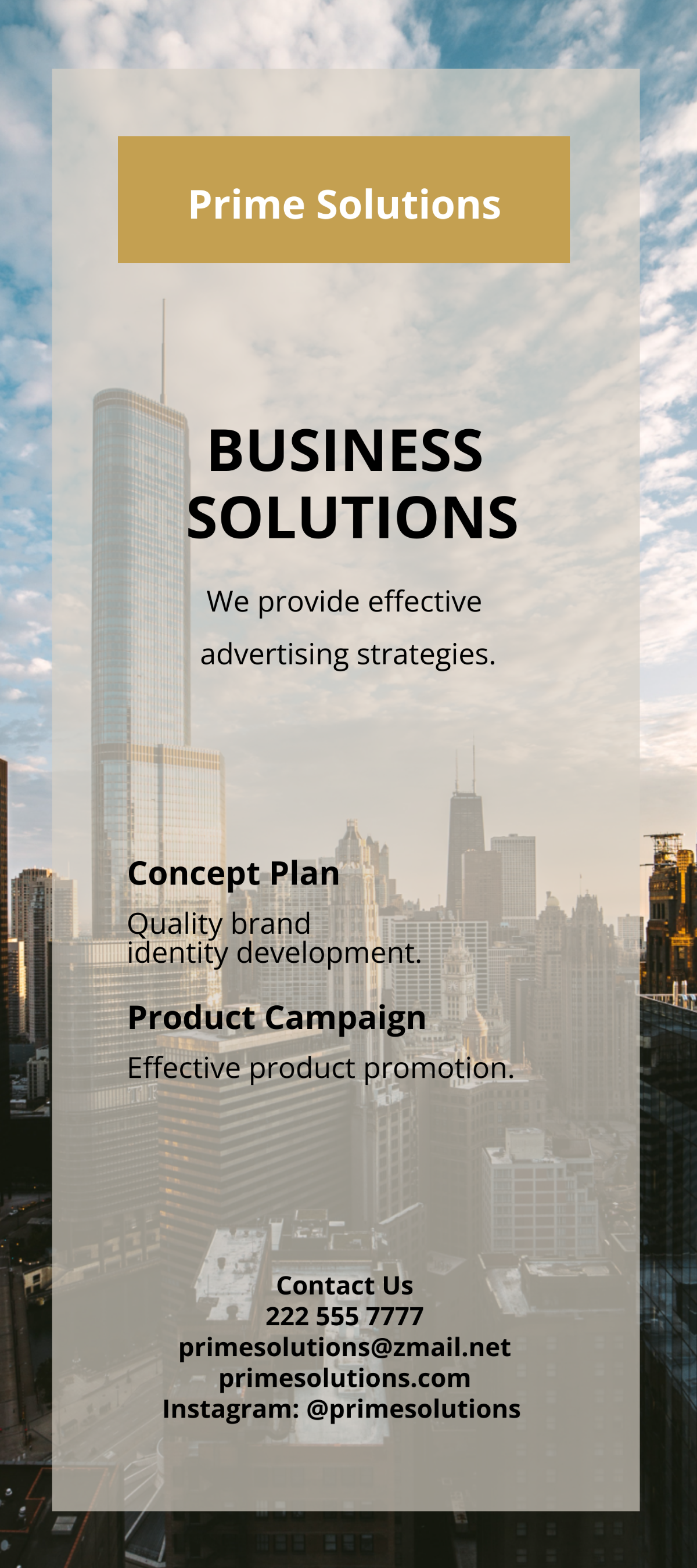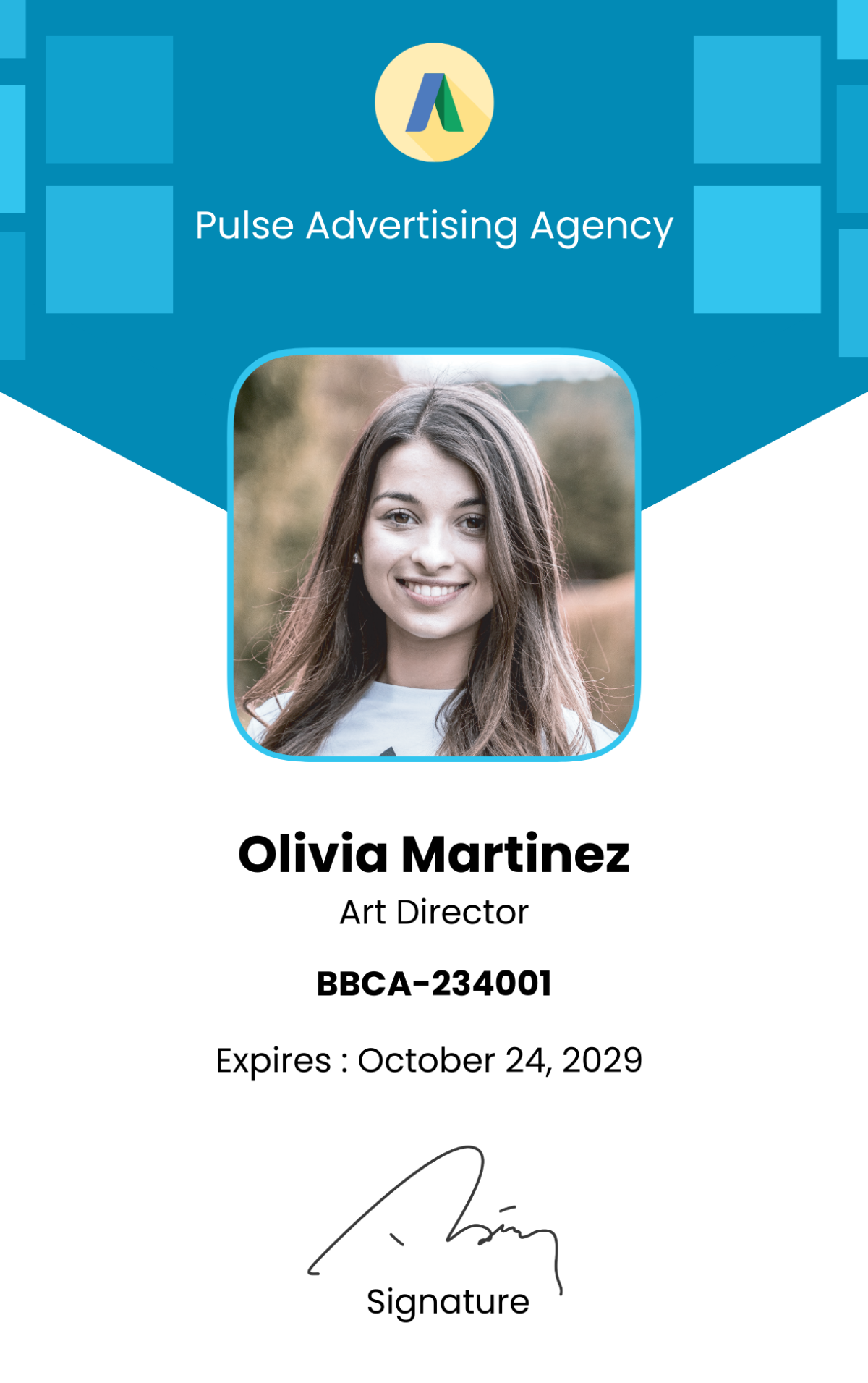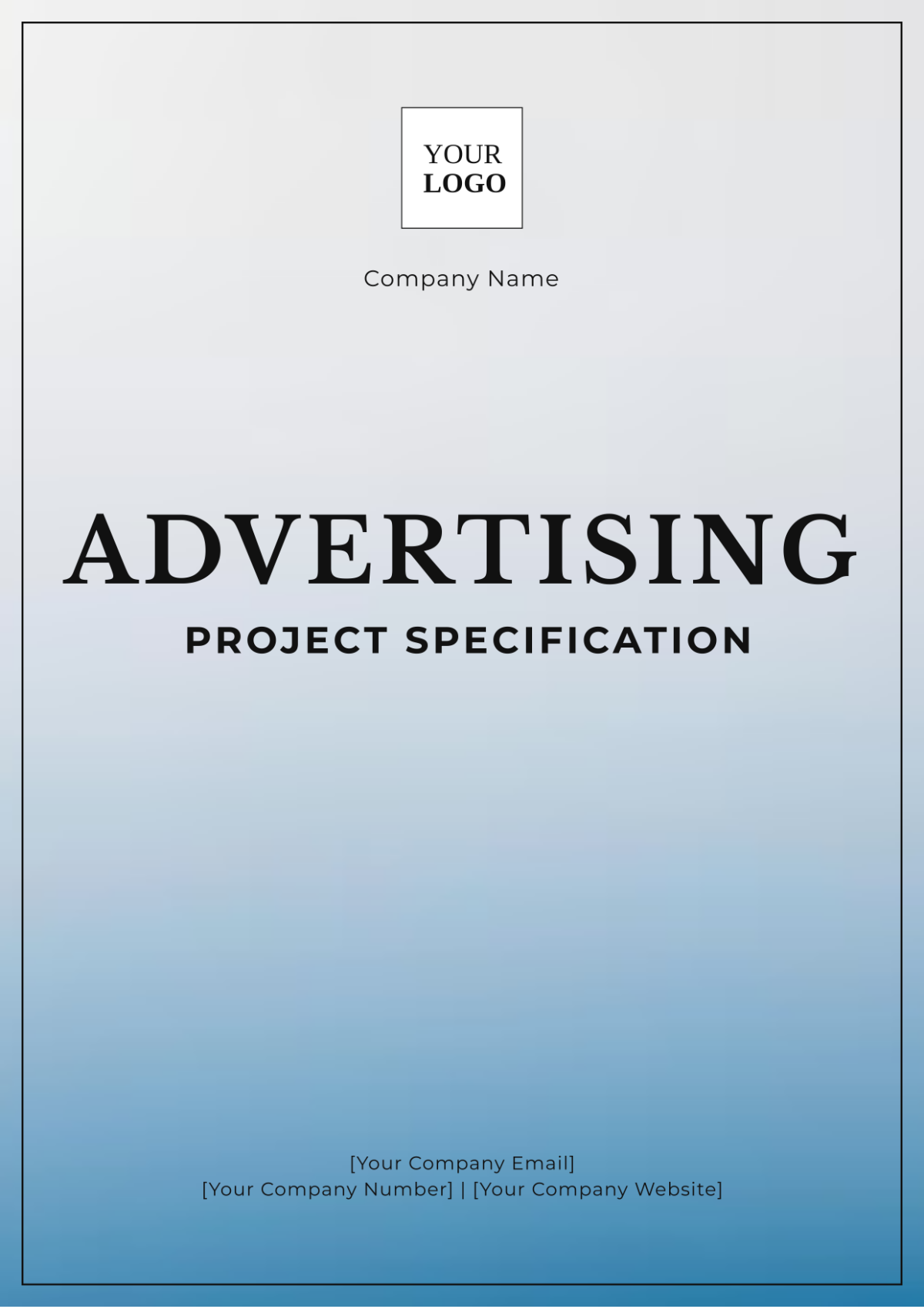Advertising Comprehensive Media Buying Guide
A. Introduction
This guide provides an in-depth overview of media buying practices for [Your Company Name]. Media buying is a critical aspect of advertising that involves strategically purchasing ad spaces across various channels to promote your brand, products, or services.
B. Understanding Media Buying
Media buying is a multifaceted and dynamic process in the field of advertising, essential for the strategic dissemination of marketing messages. Media buying involves the procurement of media space and time across a multitude of channels. This includes digital platforms, traditional media, and emerging media spaces. It is a strategic function that requires balancing cost, audience reach, and campaign objectives.
1. Key Objectives:
Maximizing Exposure: This objective is foundational to media buying, focusing on amplifying the reach of your advertising messages. By identifying and utilizing the most effective media channels, [Your Company Name] can ensure that its marketing efforts resonate with a broad yet relevant audience.
Cost Efficiency: Achieving a high ROI is crucial. This involves not only minimizing costs but also maximizing the impact of each dollar spent. It requires skillful negotiation for favorable rates and the selection of media placements that offer the best value for money. Cost efficiency also entails optimizing the timing and frequency of advertisements to capture audience attention without overspending.
Targeted Reach: This involves a detailed analysis of demographic, geographic, and psychographic factors to tailor advertising efforts. This precision targeting helps in creating more personalized and relevant advertising experiences for potential customers.
Brand Alignment: This alignment ensures that the advertising not only reaches the target audience but also reflects and reinforces the brand's values, aesthetics, and message, thereby strengthening brand identity and loyalty.
2. Strategic Considerations:
Market Analysis: A thorough understanding of the current media landscape is imperative. This involves studying market trends, understanding the reach and impact of various media platforms, and analyzing competitor strategies.
Audience Insights: This requires gathering and analyzing data to understand what motivates and engages your audience. These insights help in crafting messages and choosing media channels that resonate more profoundly with the audience.
Media Mix Modeling: Determining the right combination of media channels is critical for reaching your audience effectively while adhering to budget constraints. This involves evaluating the strengths and weaknesses of each media type and balancing them to create an integrated and cohesive media strategy.
3. Challenges and Solutions:
Rapidly Changing Media: The media industry is constantly evolving, with new platforms emerging and consumer behaviors shifting. Staying informed and agile is necessary to adapt to these changes swiftly and effectively.
Budget Constraints: Employing data-driven strategies to optimize spend across media channels can lead to more efficient use of resources, ensuring that each dollar spent contributes to achieving the campaign objectives.
Measuring Effectiveness: One of the key challenges in media buying is quantifying the success of advertising efforts. Implementing robust tracking and analytics allows for the measurement of campaign performance in real-time, enabling timely adjustments to maximize effectiveness.
4. Market Trends:
Programmatic Buying: The use of automated technologies for buying ad spaces is becoming increasingly prevalent. This method allows for more efficient and targeted ad placements, utilizing data and algorithms to make real-time bidding decisions.
Integrated Multi-channel Campaigns: The future of advertising lies in campaigns that span across various media channels, providing a seamless and cohesive brand experience. This integrated approach ensures consistent messaging and maximizes reach and impact.
Data-Driven Decisions: The role of data in media buying is becoming more pronounced. Leveraging advanced analytics and AI to inform decisions can lead to more effective targeting, optimized spending, and improved campaign performance.
C. Media Buying Strategy
Developing a buying strategy is vital for [Your Company Name] to navigate effectively in this competitive industry. This framework provides a comprehensive approach, incorporating advanced methodologies and strategic insights.
1. Strategic Planning
Objective Setting: Begin with clear, measurable objectives. This involves defining what [Your Company Name] seeks to achieve through its media buying efforts, whether it's brand awareness, lead generation, or direct sales.
Target Audience Identification: Deeply understand who the target audience is. This includes not just demographic information but also psychographic details, online behaviors, and preferences.
Competitive Analysis: Conduct an analysis of competitors' media strategies. Understanding their approach can offer insights and help in differentiating [Your Company Name]'s media plan.
2. Budget Allocation
Budget Distribution: Determine how to allocate the budget across various media channels. This decision should be based on the effectiveness of each channel in reaching the target audience and the cost associated with each media type.
Media Channel | Budget Allocation |
|---|---|
Digital Display Ads | 25% |
ROI Forecasting: Project the expected return on investment for each channel. Utilize historical data and market benchmarks to make informed predictions.
Flexibility Provision: Ensure there is flexibility in the budget to capitalize on unforeseen opportunities or to pivot strategies based on real-time performance.
3. Channel Selection
Media Mix Decision: Choose a mix of media channels that complement each other and align with the campaign goals. This could include a blend of traditional media and digital platforms.
Cross-Channel Integration: Ensure that the chosen channels work synergistically to create a cohesive and unified campaign experience.
Emerging Media Exploration: Stay attuned to emerging media opportunities, such as augmented reality or interactive ad formats, which can offer innovative ways to engage with the audience.
4. Timing and Scheduling
Seasonality Consideration: Factor in seasonal trends and industry-specific peaks when planning the media schedule.
Audience Availability: Schedule ads based on when the target audience is most likely to engage with the content.
Event-Driven Opportunities: Identify and leverage key events, holidays, or cultural moments that align with [Your Company Name]'s brand values and marketing objectives.
5. Creative Alignment
Creative Strategy Development: Develop a creative strategy that aligns with the media buying plan. The messaging and design should be consistent across all channels to reinforce brand recognition.
Customization for Channels: Tailor the creative execution to suit the strengths and limitations of each selected media channel.
Performance Testing: Test different creative variants to determine which resonates best with the audience and optimize based on performance data.
By adopting this framework, the company can effectively allocate resources, engage with the target audience, and achieve its marketing and business objectives with greater precision and impact.
D. Media Buying Process
The media buying process is a component encompassing a series of detailed and strategic steps. This overview outlines the augmented phases, tailored specifically to maximize the effectiveness and efficiency of your company's media investments.
1. Research and Analysis
Market and Media Analysis: This step involves a thorough examination of the current media perspective, including trends, audience behaviors, and competitor activities. It's crucial for [Your Company Name] to understand where the target audience spends their time and which media channels are most effective for reaching them.
Audience Segmentation and Profiling: Detailed audience analysis is essential. This involves segmenting the audience based on demographics, psychographics, and media consumption habits. Understanding these aspects allows for more targeted and impactful media placements.
Media Cost and Reach Evaluation: Assessing the cost-effectiveness of various media options is key. This includes analyzing the cost per thousand impressions (CPM), reach, and overall ROI potential of different media channels.
2. Strategy Development
Media Selection: Based on the research findings, select the most appropriate media channels for campaign execution. This decision should align with [Your Company Name]'s marketing objectives, budget constraints, and audience preferences.
Budget Allocation: Allocate the advertising budget strategically across chosen media channels. This involves balancing the mix of high-reach but costly channels with more targeted, cost-effective options.
Timing and Scheduling: Develop a schedule for when and how often the ads will run. Timing can significantly impact the effectiveness of a campaign; therefore, it's crucial to align this with audience habits and significant events or seasons.
3. Negotiation and Purchase
Rate Negotiation: Engage in negotiations with media vendors to secure the best possible rates and placement conditions. This step can significantly impact the cost efficiency of the campaign.
Contract Finalization: Once terms are agreed upon, finalize contracts with media vendors. Ensure that all details are clearly outlined, including ad placement, duration, frequency, and any special conditions.
4. Campaign Execution
Ad Placement and Launch: Execute the media plan by placing the ads according to the predetermined schedule. Ensure that all content is correctly formatted and optimized for each channel.
Performance Tracking: Monitor the campaign's performance in real-time. Use analytics tools to track reach, engagement, conversions, and other relevant metrics.
5. Post-Campaign Analysis
Comprehensive Performance Review: After the campaign concludes, conduct a thorough analysis of its overall performance. Evaluate metrics such as ROI, audience reach, engagement rates, and conversion figures.
Insights and Learnings: Extract key learnings and insights from the campaign data. This information is invaluable for informing future media buying strategies and decisions.
This process is designed to ensure a meticulous, data-driven approach. By adhering to this structured methodology, the company can effectively manage its advertising resources and achieve its marketing objectives in an increasingly competitive landscape.
E. Monitoring and Optimization
For [Your Company Name], monitoring and optimization are the practices that ensure the effectiveness and efficiency of advertising campaigns. This framework provides a comprehensive approach to these crucial aspects.
1. Continuous Performance Monitoring
Advanced Analytics Integration: Employ cutting-edge analytics tools to monitor campaign performance in real time. This includes tracking metrics such as reach, engagement, click-through rates, and conversions.
KPI Tracking: Identify key performance indicators (KPIs) specific to each campaign and media channel. Regularly measure these KPIs against predefined goals to assess campaign effectiveness.
Audience Response Analysis: Monitor and analyze how different audience segments are responding to the campaigns. This can provide insights into audience preferences and behaviors, guiding future content and strategy adjustments.
2. Data-Driven Optimization
Real-Time Adjustments: Based on the performance data, make immediate adjustments to the media strategy. This could involve reallocating budget, changing ad placements, or tweaking ad creatives.
A/B Testing: Regularly conduct A/B tests to compare different aspects of the campaigns, such as ad creatives, headlines, and call-to-actions. Use the results to optimize future campaigns.
Predictive Analytics: Utilize predictive analytics to forecast campaign outcomes. This can help in proactively making adjustments to optimize performance.
3. ROI Optimization
Cost-Performance Analysis: Continuously assess the cost-effectiveness of each media channel and campaign. Focus on channels and strategies that yield the highest ROI.
Conversion Rate Optimization: Implement strategies to improve the conversion rates of your campaigns, such as refining targeting criteria, improving ad creatives, and enhancing user experience.
Budget Reallocation: Based on performance insights, periodically reassess and adjust the budget allocation to ensure resources are being used most effectively.
4. Cross-Channel Synergy: Integrated Approach
Cross-Channel Analytics: Implement analytics that provide a holistic view of performance across all channels. Understanding how different channels interact and contribute to the overall campaign goals is crucial.
Unified Dashboard: Use a unified dashboard to aggregate data from various channels. This aids in a comprehensive view of the campaign performance and facilitates easier decision-making.
F. Learning and Evolution: Long-Term Strategy
Post-Campaign Analysis: After each campaign, conduct a thorough analysis to extract key learnings and insights.
Feedback Loop: Establish a feedback loop where insights from current campaigns inform the strategies for future campaigns.
Market Trends Adaptation: Continuously update the monitoring and optimization strategies to align with evolving market trends and technological advancements.
This monitoring and optimization framework ensures that media buying is not just a set-it-and-forget-it activity but a dynamic, evolving process. By employing these advanced practices, your company can stay ahead of the curve, continuously refine its advertising efforts, and achieve sustained success in its marketing endeavors.
F. Conclusion
Media buying for [Your Company Name] demands a strategic approach that aligns with the company's goals and target audience. By effectively managing your budget, selecting the right channels, and continuously optimizing based on performance data, your company can maximize the impact of its advertising campaigns.
This guide serves as a foundational resource for [Your Company Name]'s media buying endeavors. Implementing these strategies will enable your company to navigate the complex landscape of media buying with greater efficacy and success.

















































